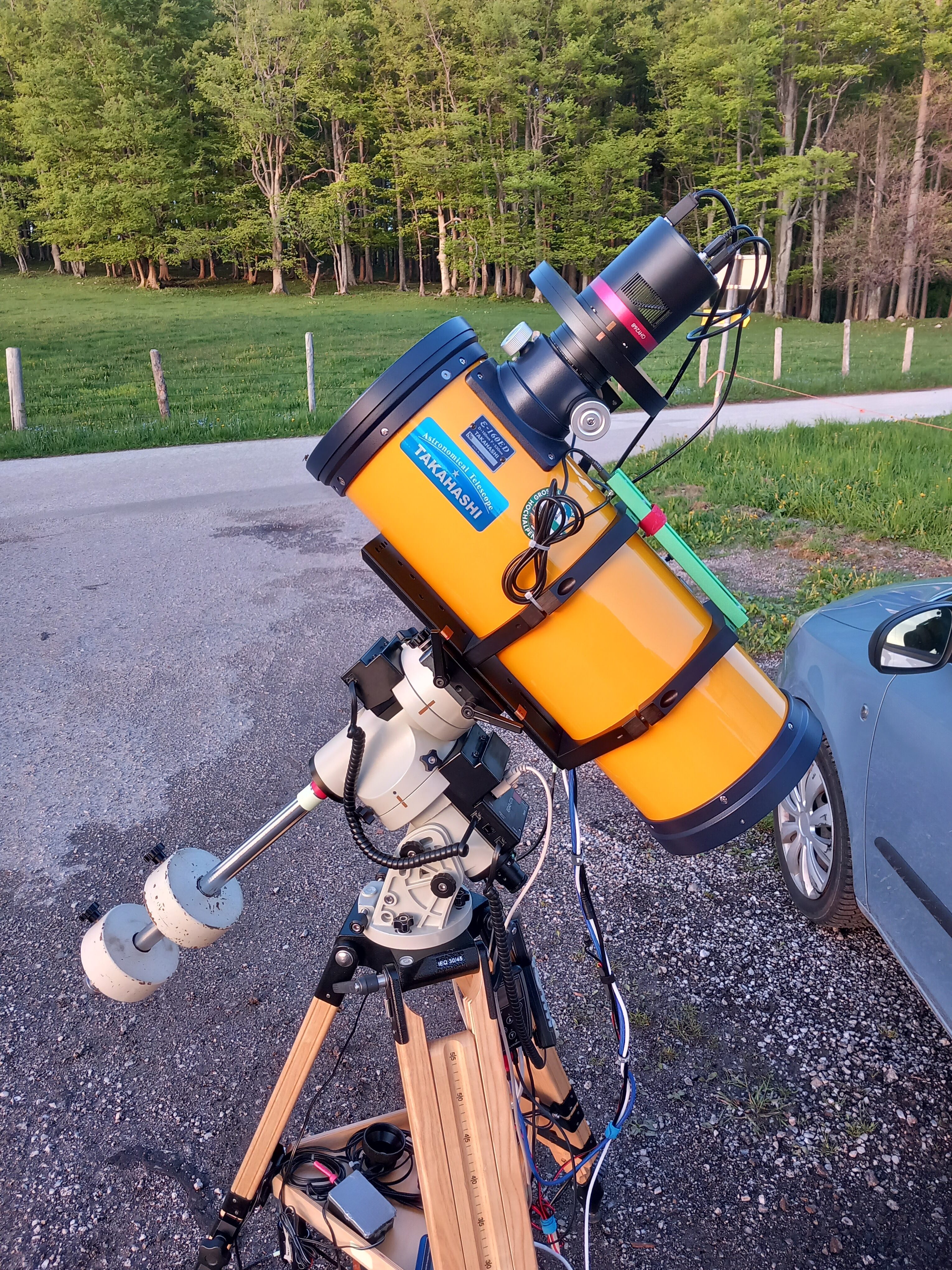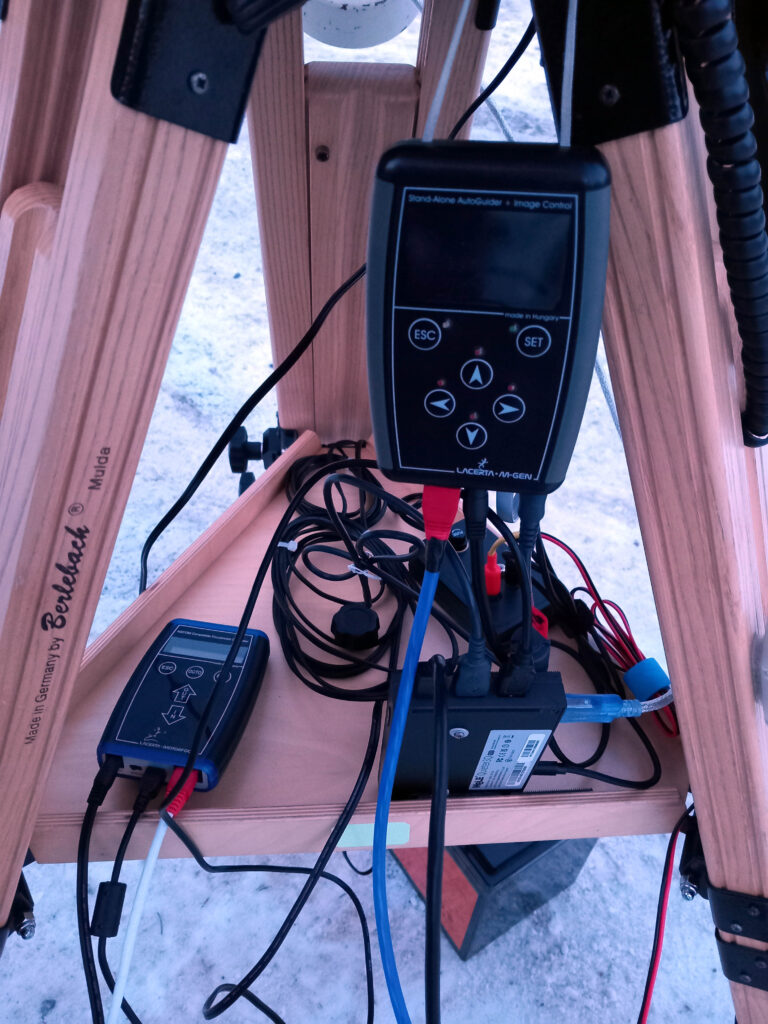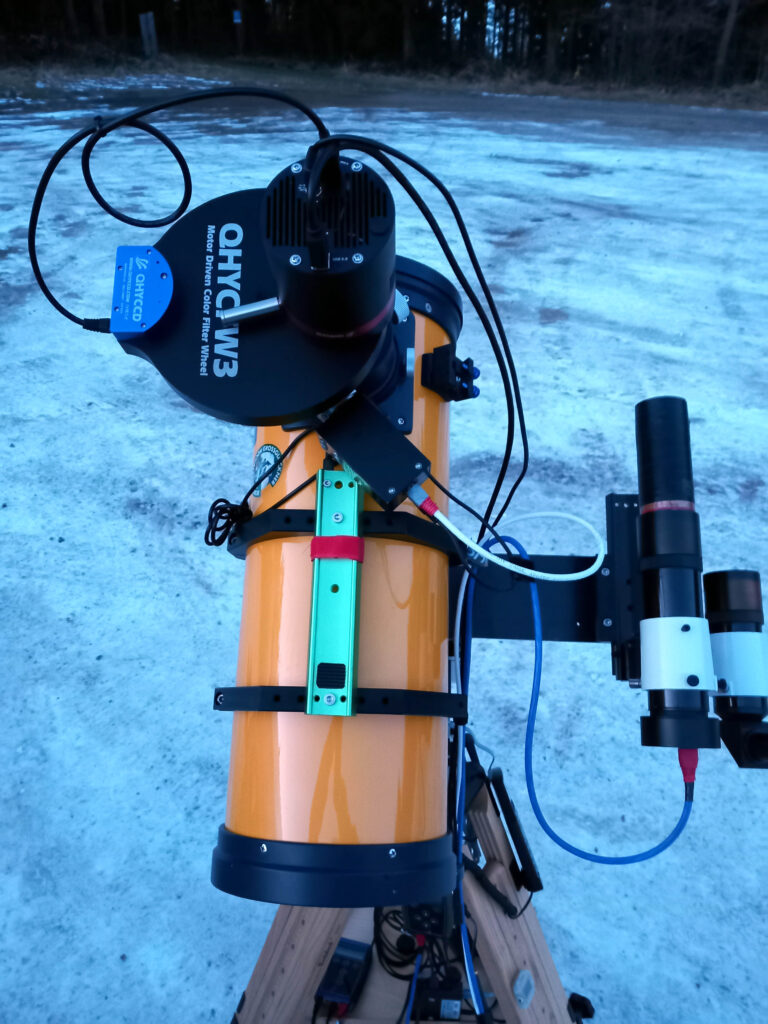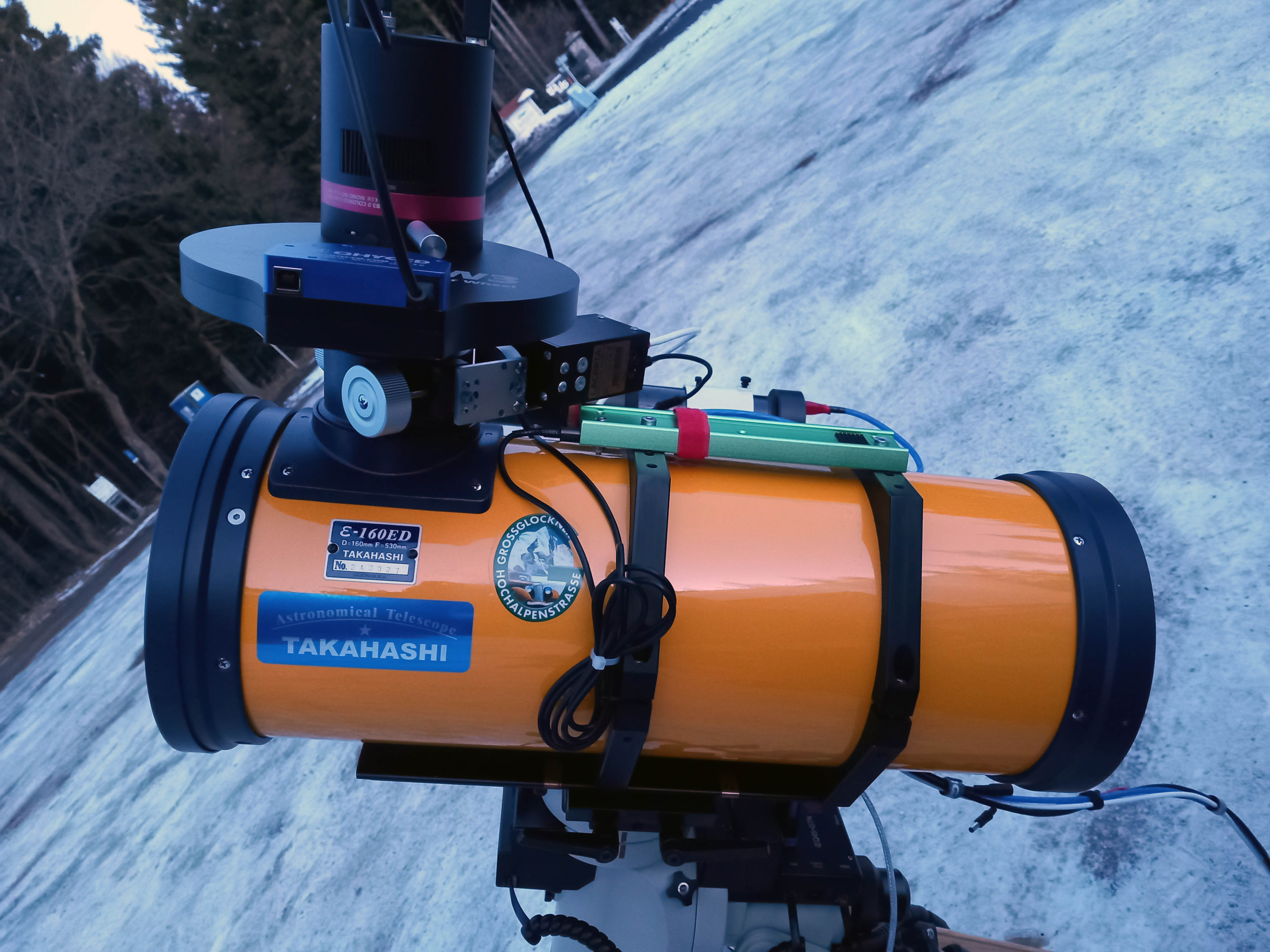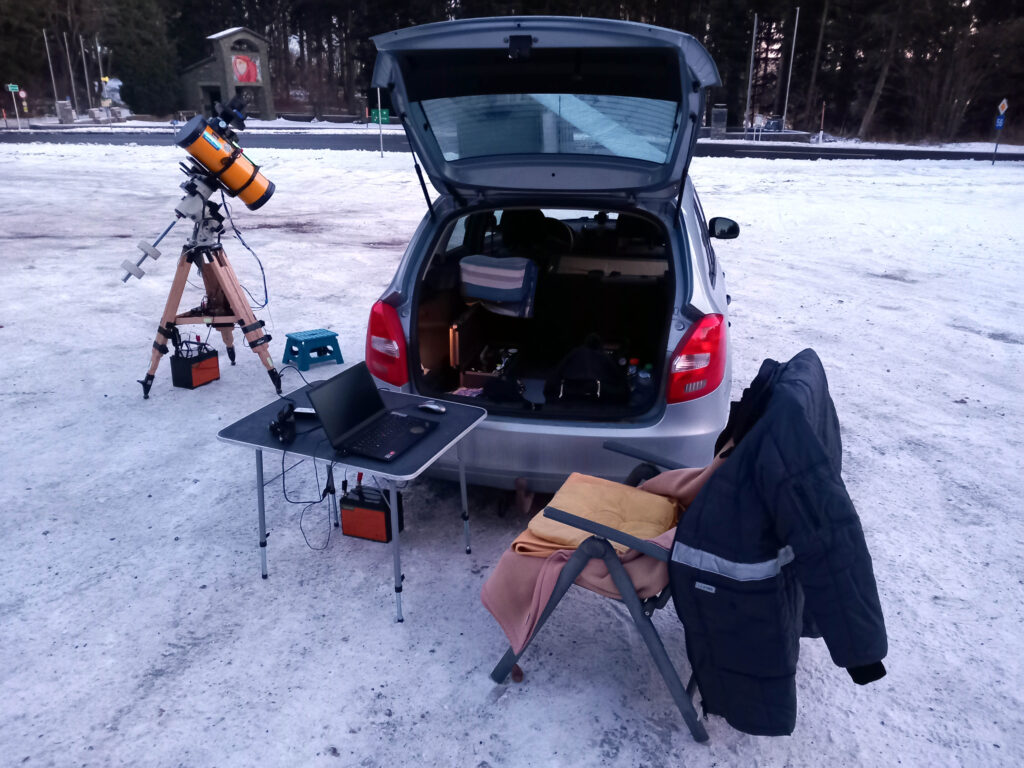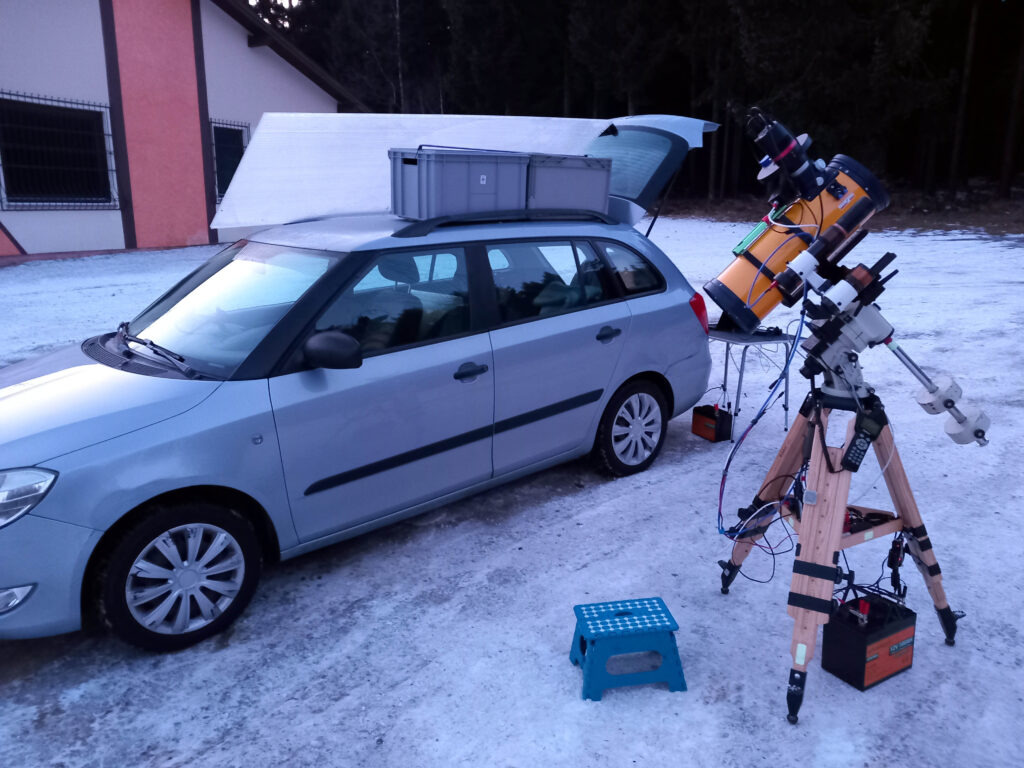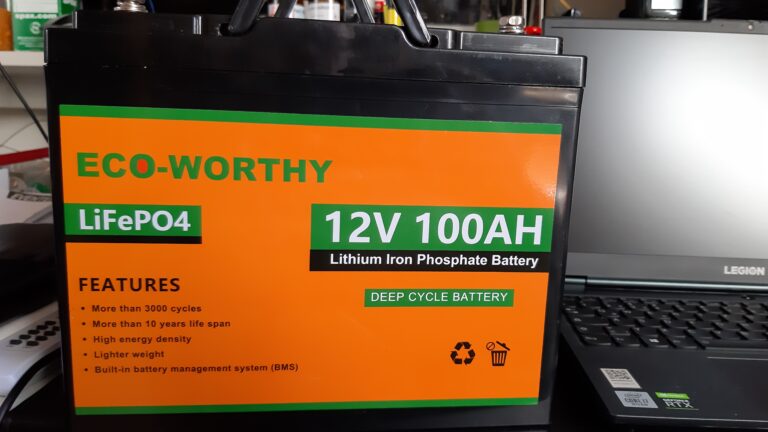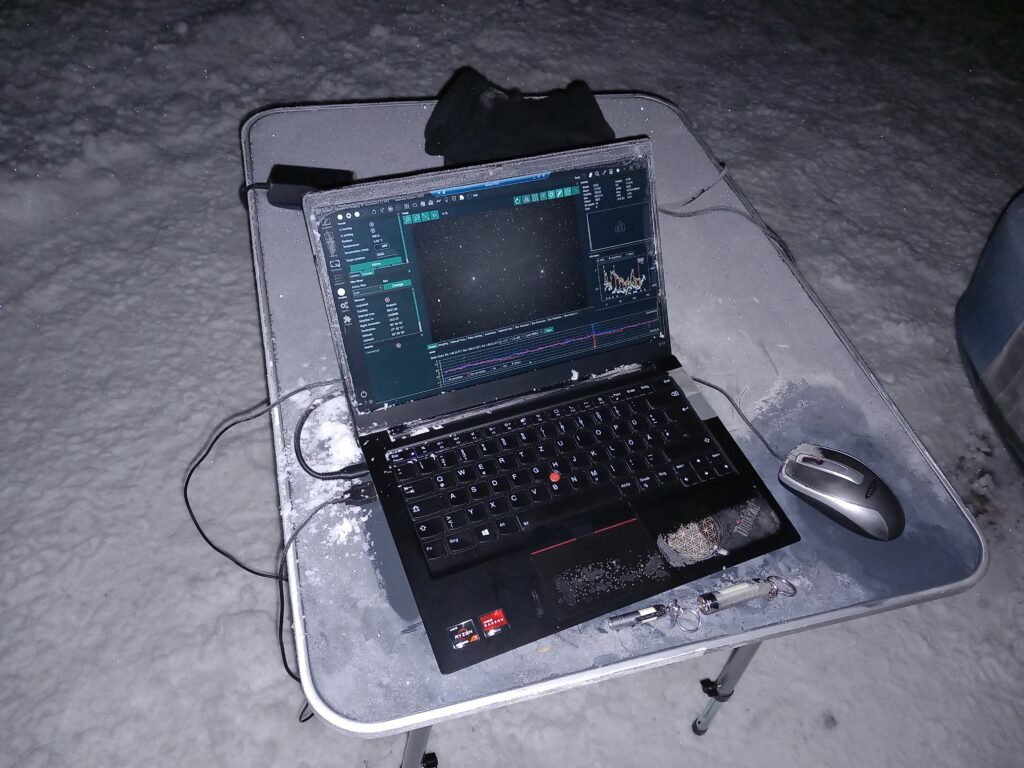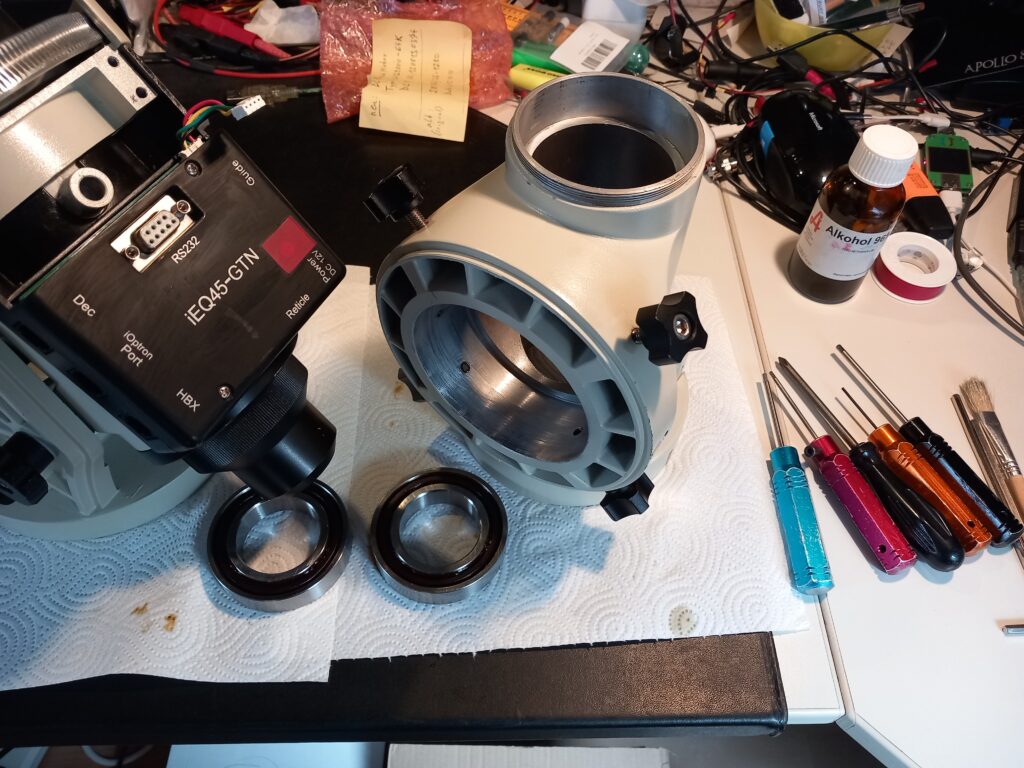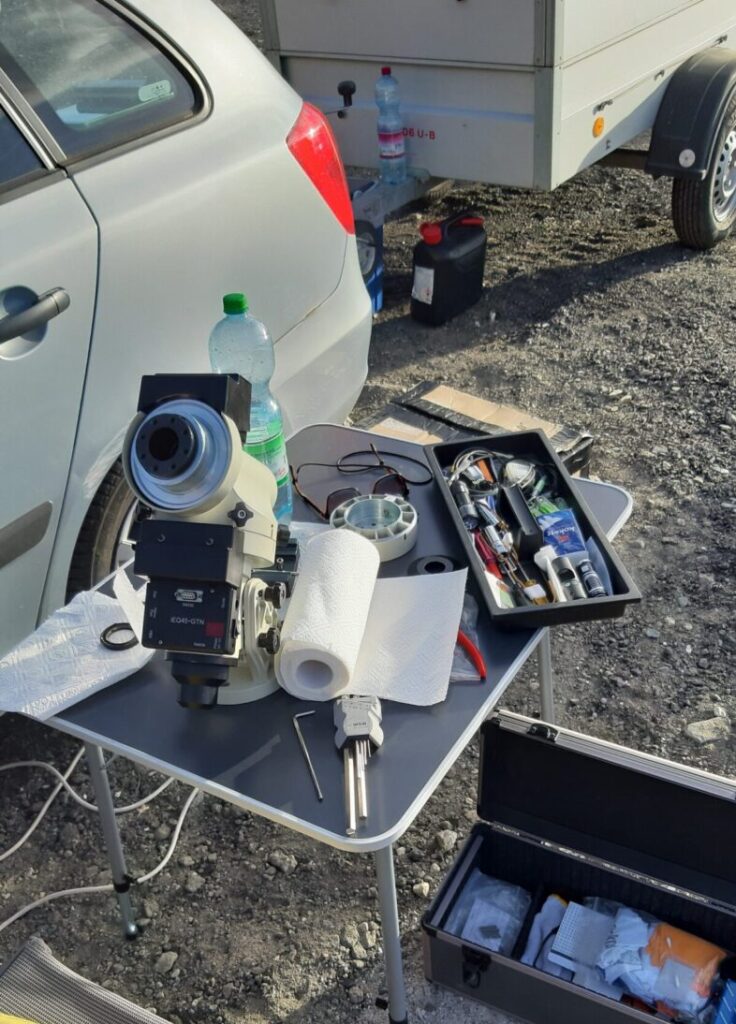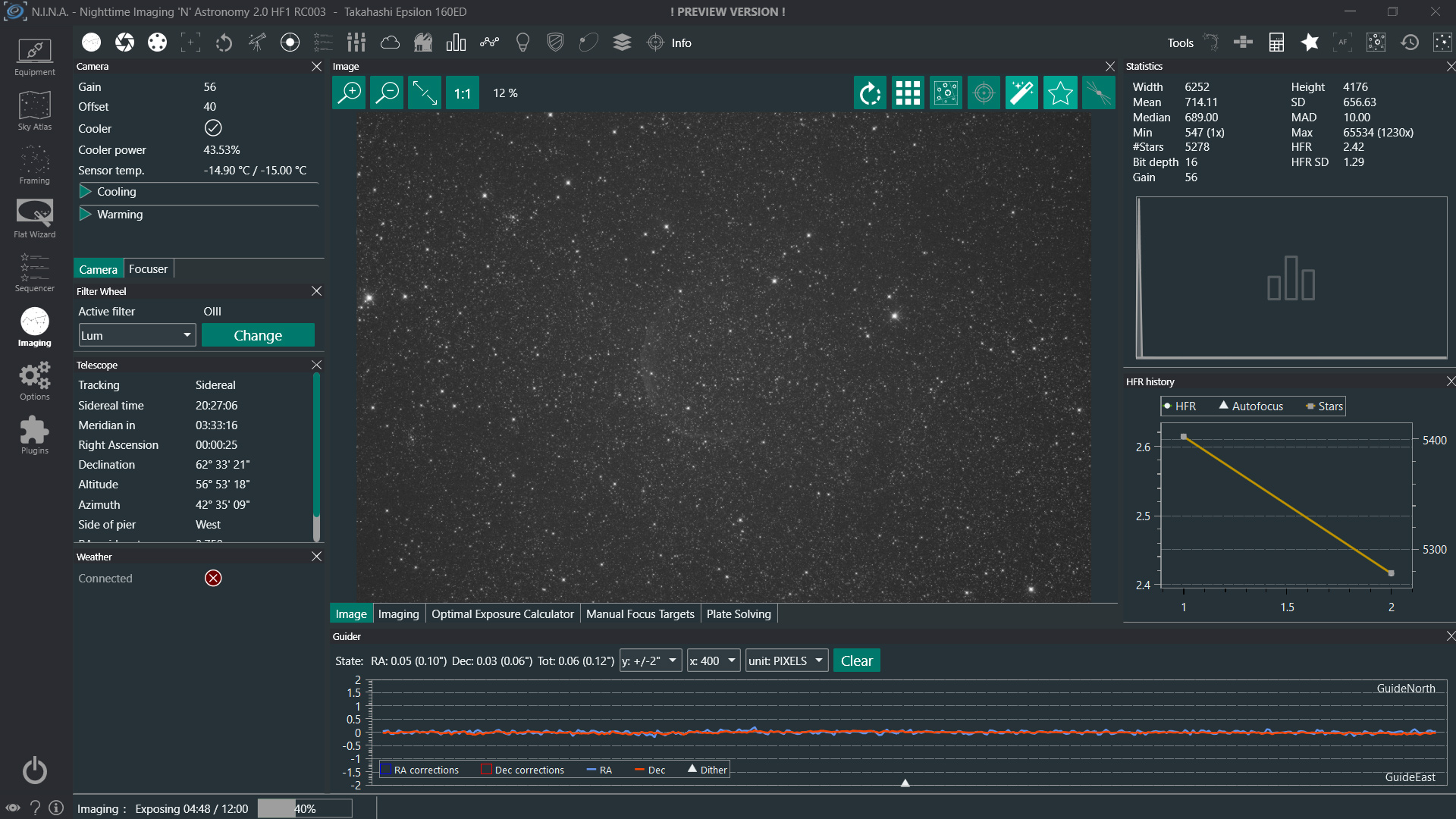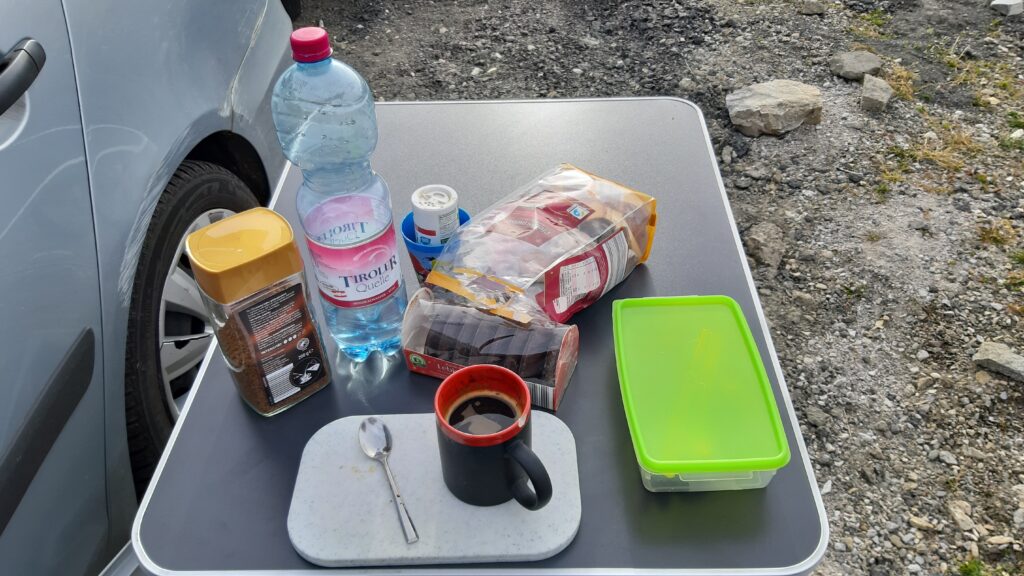My Equipment
After many years of astrophotography, I bought a top Newtonian about 5 years ago.
It is a Takahashi Epsilon 160ED with 530mm focal length and f/3.3.
This “Astrograph” is characterized by particularly good image quality even in full format.
It is taken with a cooled Astro camera QHY268M with 7-part filter wheel for Luminance, Red, Green, Blue and the Narrow band filters for the Elements Ha (hydrogen), OIII (oxygen) and SII (sulfur).
This means I can record normal L-RGB recordings and narrowband recordings in SHO, HOO, etc., just in the Hubble Palette to record.
As mount I use the over 11 year old Ioptron iEQ45, which I have maintained and optimized very well over the last few years. Here you can find a Guiding example from CTB 1 see from the Fuscher Törl.
With my additional equipment, it is now possible for me to remotely access the telescope itself and the necessary recording and control elements “on field”.
How does this work?
Via the free software N.I.N.A. I remotely control the “MELE mini PC” on the tripod via my notebook, mobile phone or tablet, and it controls the following devices on the mount via 4 USB3 interfaces:
- The Astro-Camera QHY268M and the associated 7 piece filter wheel from QHY.
- The Mount Ioptron iEQ45.
- The subpixel precise tracking control using Lacerta MGEN2.
- With the Lacerta MFOC2 the focus setting on the focuser of the Newton is accurate to 0.001mm on my Takahashi Epsilon 160ET Newton.
With this “Remote control option” I don't need to look for or touch the mount during the recording sequences and I can control the named devices directly automatically or manually.
In practice I create about the free software N.I.N.A., so-called “recording sequences”, with which then what is to be recorded “Deep Sky Object” is approached and by means of „plate solving“ is aligned on the recording chip, filters are selected, focus is set and the specified recording sequences are processed.
In between, after each recording, the sharpness and position on the recording chip in the background is checked and, if necessary, corrected immediately. Fortunately, this works very well.
However, I like to follow the recording sequences directly on the notebook itself, as despite the automatic mode it sometimes requires intervention on the PC or mount.
This allows me to use the possible recording times plus the nautical twilight time to make optimal use of it and use it to its full potential as planned the Astronomical night for deep-sky recordings.
